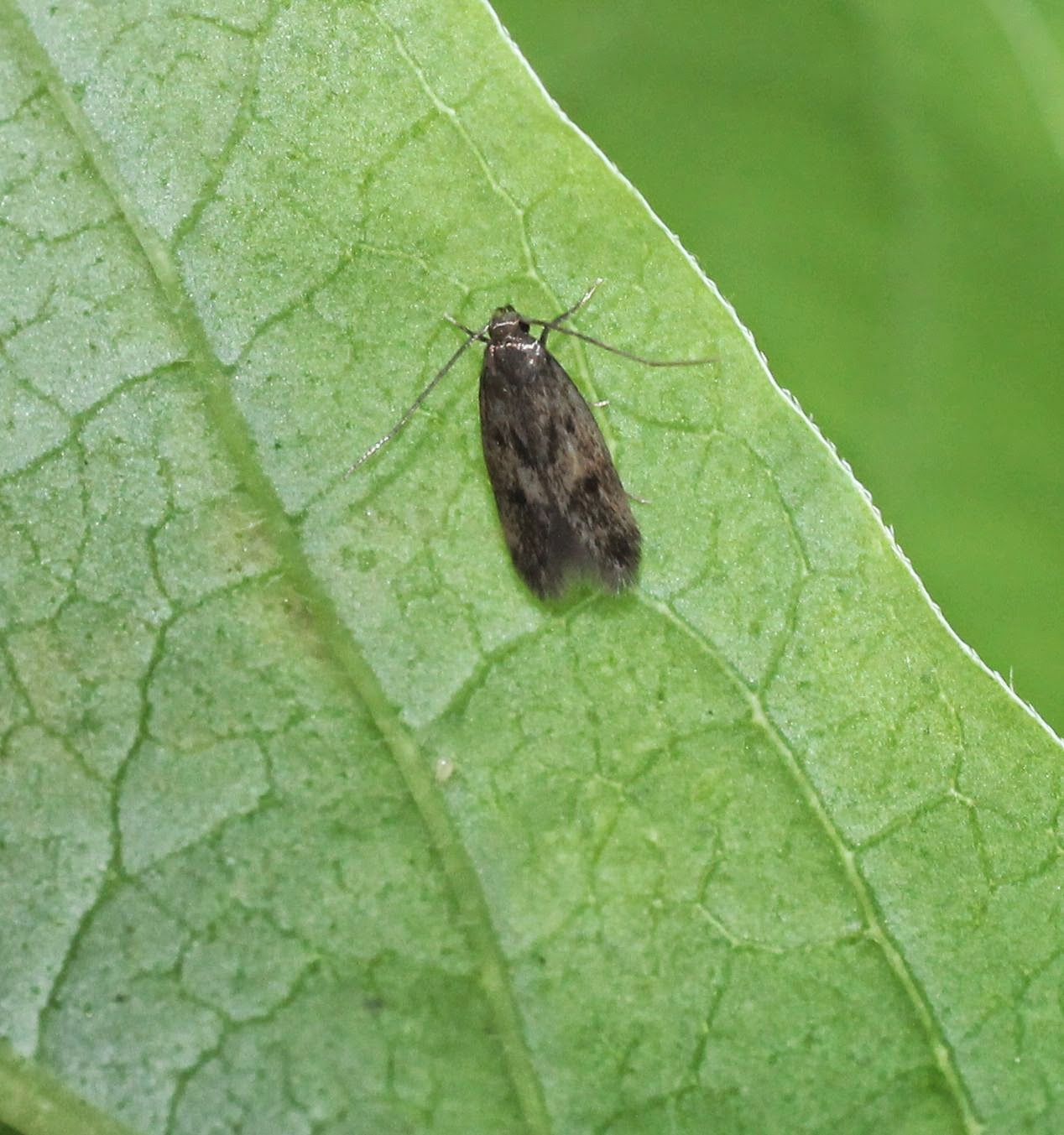 |
| (Borkhausenia fuscescens) |
Last night we had an impressive catch at Shandy Hall's gardens – not bad after recording an impressive fifty-four species for National Moth Night the night before. This morning a Poplar Hawk-moth (Laothoe populi) was seen perched on the side of the trap; a Garden Tiger (Arctia caja) displayed its high-contrast patterned wings; a Regal Piercer (Pammene regiana), with its remarkable yellow crown, also caught our attention.
What almost escaped our notice became the most important catch of the day. On the side of the trap's transparent lid rested a miniscule moth that is hardly remarkable in any way at all – besides, perhaps, being one of the smallest moths we've recorded since my arrival. It was a Small Dingy Tubic (Borkhausenia fuscescens). 'Fuscescens', or 'fuscuous', means to be dark and somber in color. Indeed, the moth's wings appeared muddy and brown. Little distinctive patterns could be made out besides two pairs of dark spots along the middle of each wing. What finally betrayed its identity was the long hairy edge of its wings. In contrast to the elegant 'trimmings' on the wings of, say, a Silver Ground Carpet (Xanthorhoe montanata), like an ornate Victorian dress, the hairy wings of the Small Dingy Tubic reminded me of the furry coats of a steppe rider. It's important, I suppose, for a moth this small to carry a somewhat hardy appearance.
So far, we've recorded 348 different species of moth. We hope July will continue to add new species to the list.
On Wednesday morning (9 July - from 7.00am until around 10.30am), if you are near the Museum Gardens in York, the moth catch from the previous night can be seen on our stand near the observatory.
What almost escaped our notice became the most important catch of the day. On the side of the trap's transparent lid rested a miniscule moth that is hardly remarkable in any way at all – besides, perhaps, being one of the smallest moths we've recorded since my arrival. It was a Small Dingy Tubic (Borkhausenia fuscescens). 'Fuscescens', or 'fuscuous', means to be dark and somber in color. Indeed, the moth's wings appeared muddy and brown. Little distinctive patterns could be made out besides two pairs of dark spots along the middle of each wing. What finally betrayed its identity was the long hairy edge of its wings. In contrast to the elegant 'trimmings' on the wings of, say, a Silver Ground Carpet (Xanthorhoe montanata), like an ornate Victorian dress, the hairy wings of the Small Dingy Tubic reminded me of the furry coats of a steppe rider. It's important, I suppose, for a moth this small to carry a somewhat hardy appearance.
So far, we've recorded 348 different species of moth. We hope July will continue to add new species to the list.
On Wednesday morning (9 July - from 7.00am until around 10.30am), if you are near the Museum Gardens in York, the moth catch from the previous night can be seen on our stand near the observatory.
Post by Bowen Chang (UPenn)
